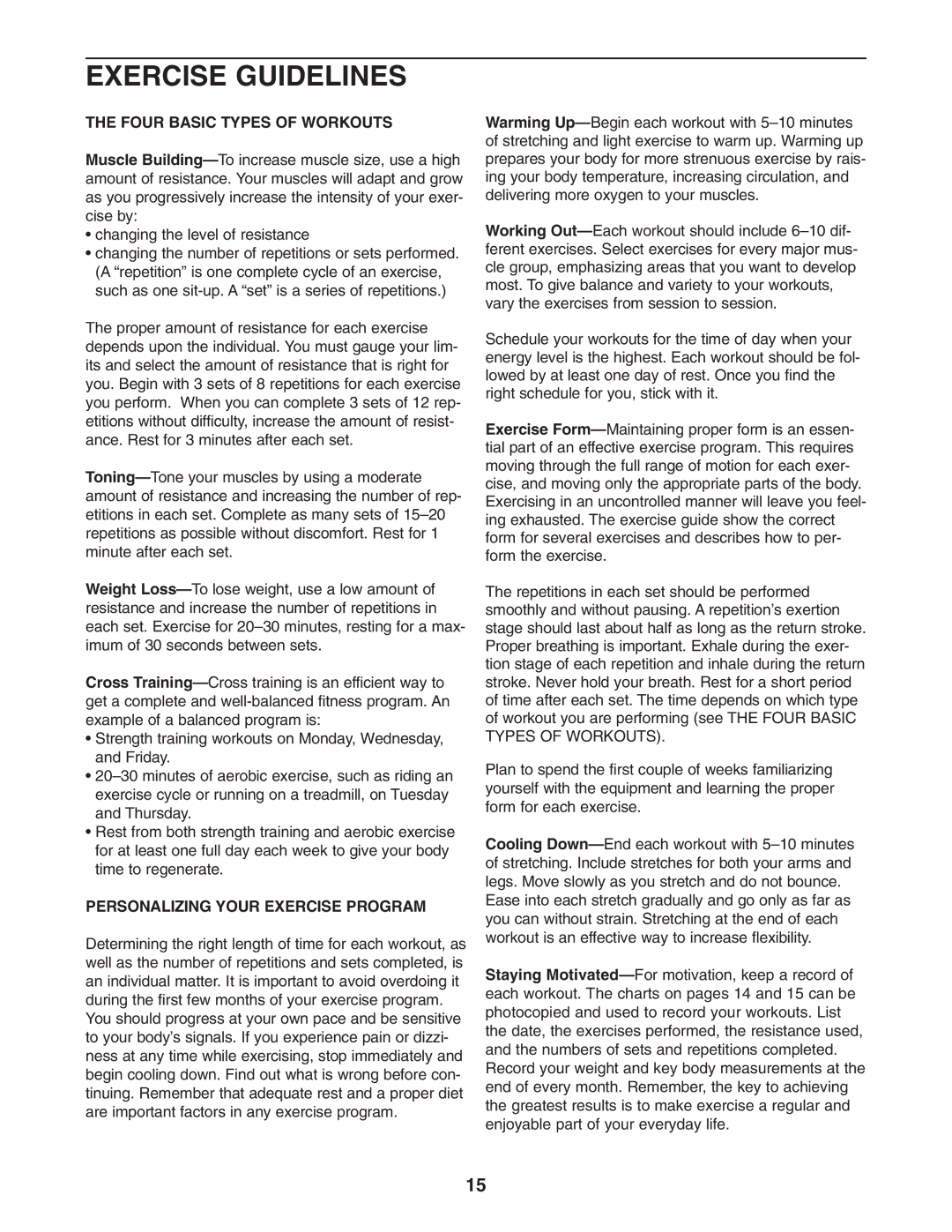EXERCISE GUIDELINES
THE FOUR BASIC TYPES OF WORKOUTS
Muscle
•changing the level of resistance
•changing the number of repetitions or sets performed. (A “repetition” is one complete cycle of an exercise, such as one
The proper amount of resistance for each exercise depends upon the individual. You must gauge your lim- its and select the amount of resistance that is right for you. Begin with 3 sets of 8 repetitions for each exercise you perform. When you can complete 3 sets of 12 rep- etitions without difficulty, increase the amount of resist- ance. Rest for 3 minutes after each set.
Weight
Cross
•Strength training workouts on Monday, Wednesday, and Friday.
•
•Rest from both strength training and aerobic exercise for at least one full day each week to give your body time to regenerate.
PERSONALIZING YOUR EXERCISE PROGRAM
Determining the right length of time for each workout, as well as the number of repetitions and sets completed, is an individual matter. It is important to avoid overdoing it during the first few months of your exercise program.
You should progress at your own pace and be sensitive to your body’s signals. If you experience pain or dizzi- ness at any time while exercising, stop immediately and begin cooling down. Find out what is wrong before con- tinuing. Remember that adequate rest and a proper diet are important factors in any exercise program.
Warming
Working
Schedule your workouts for the time of day when your energy level is the highest. Each workout should be fol- lowed by at least one day of rest. Once you find the right schedule for you, stick with it.
Exercise
The repetitions in each set should be performed smoothly and without pausing. A repetition’s exertion stage should last about half as long as the return stroke. Proper breathing is important. Exhale during the exer- tion stage of each repetition and inhale during the return stroke. Never hold your breath. Rest for a short period of time after each set. The time depends on which type of workout you are performing (see THE FOUR BASIC TYPES OF WORKOUTS).
Plan to spend the first couple of weeks familiarizing yourself with the equipment and learning the proper form for each exercise.
Cooling
Ease into each stretch gradually and go only as far as you can without strain. Stretching at the end of each workout is an effective way to increase flexibility.
Staying
15
